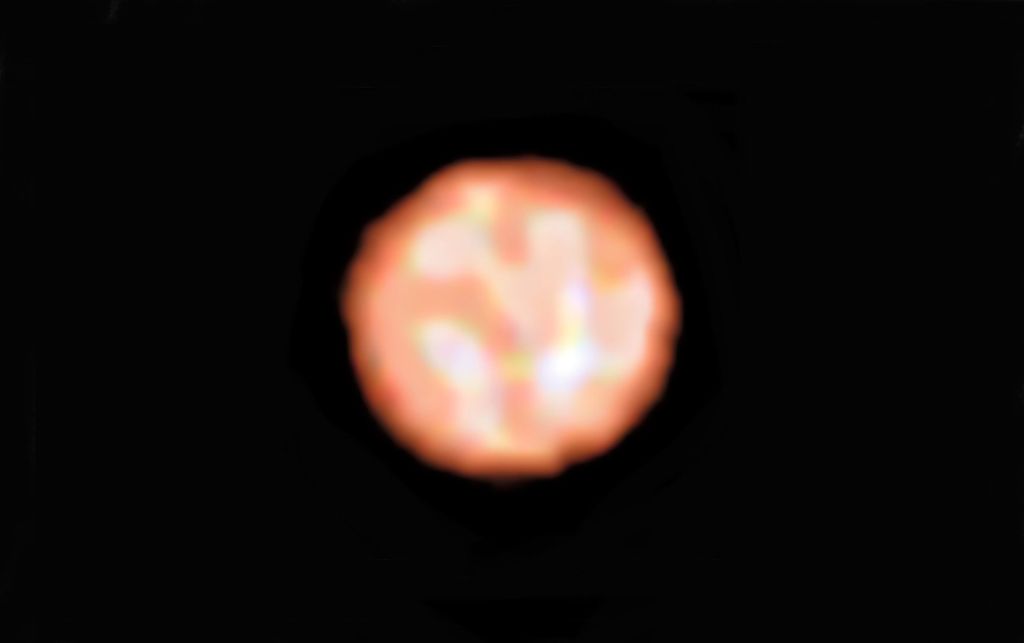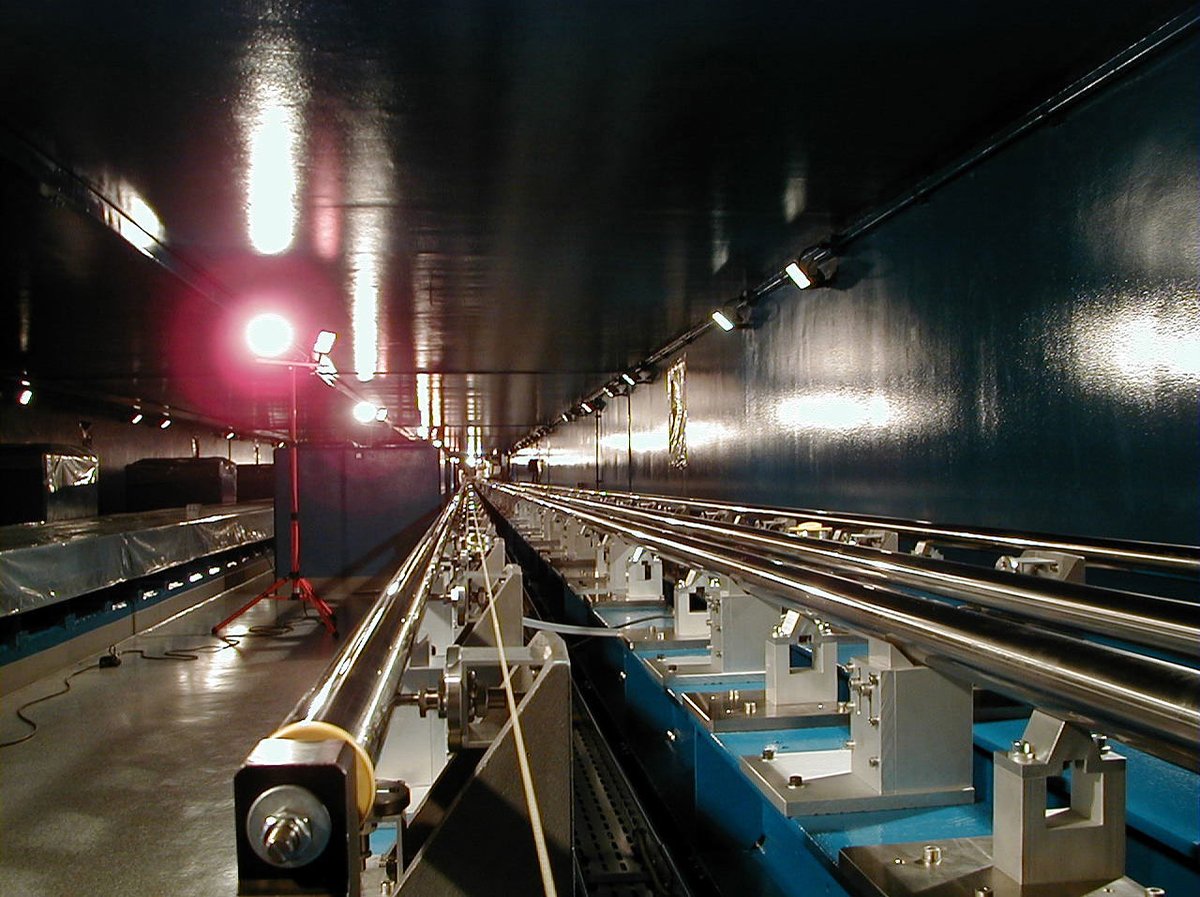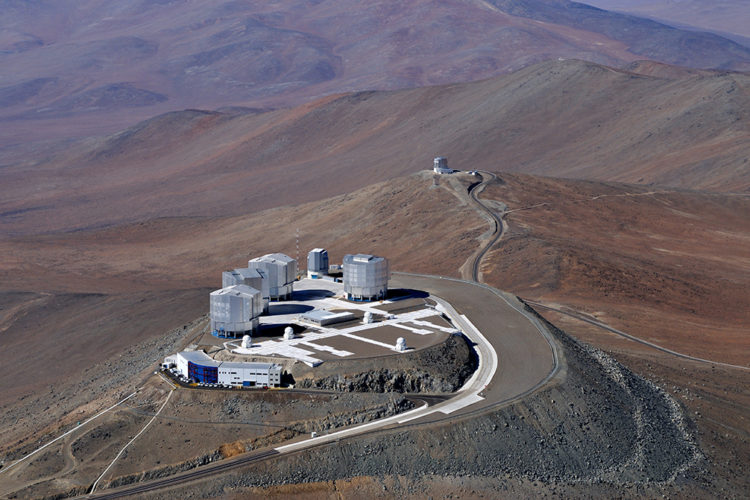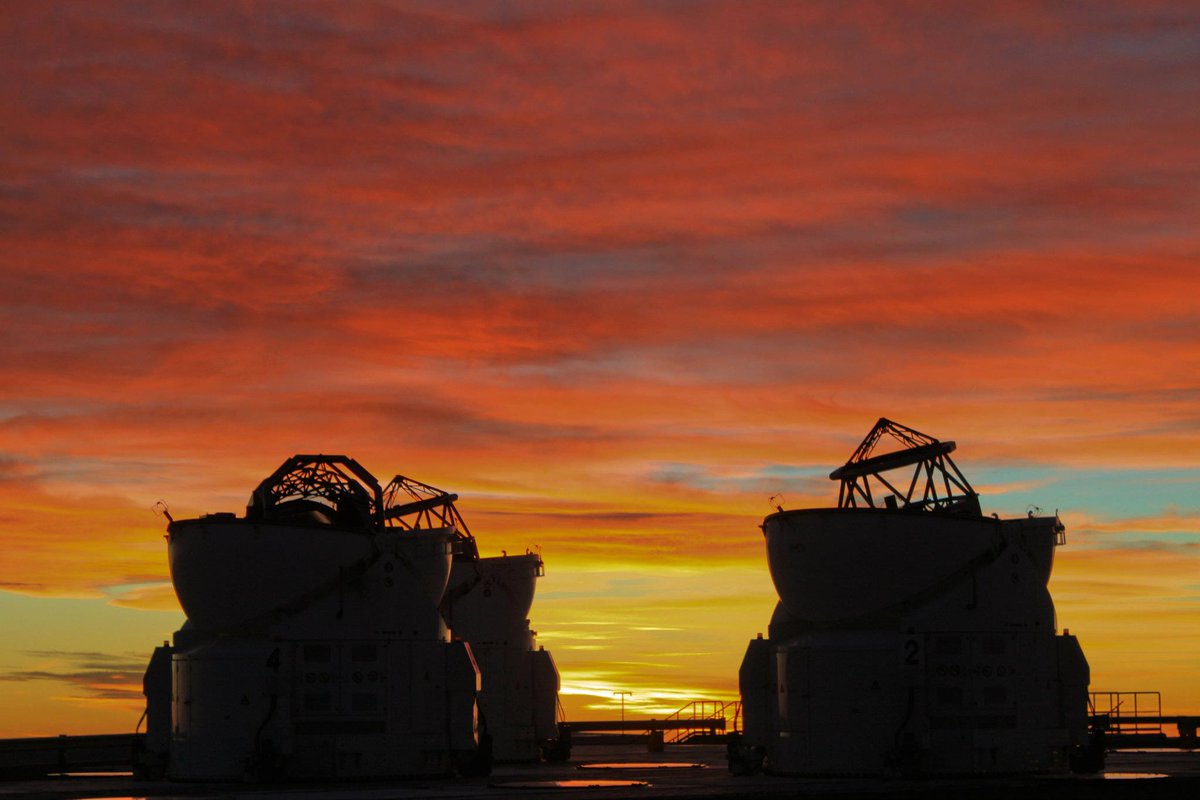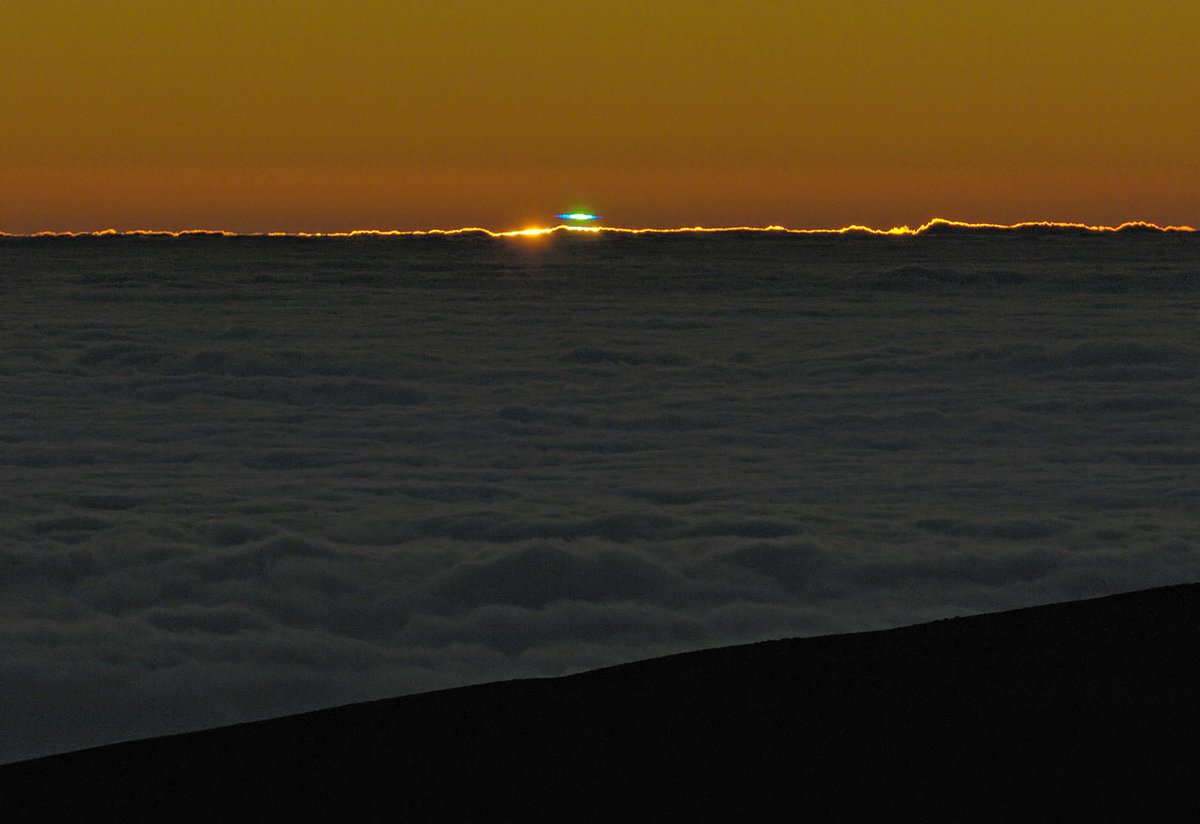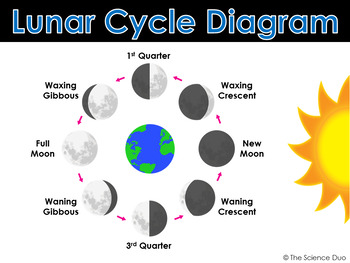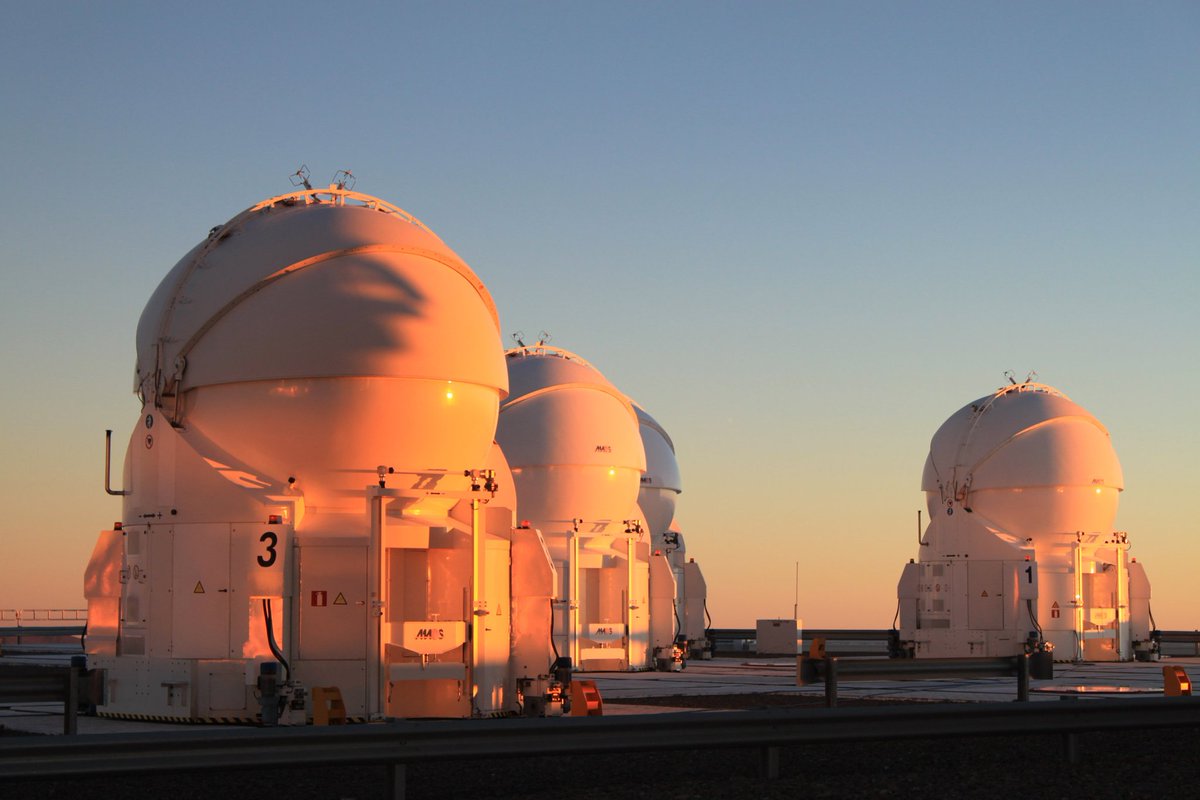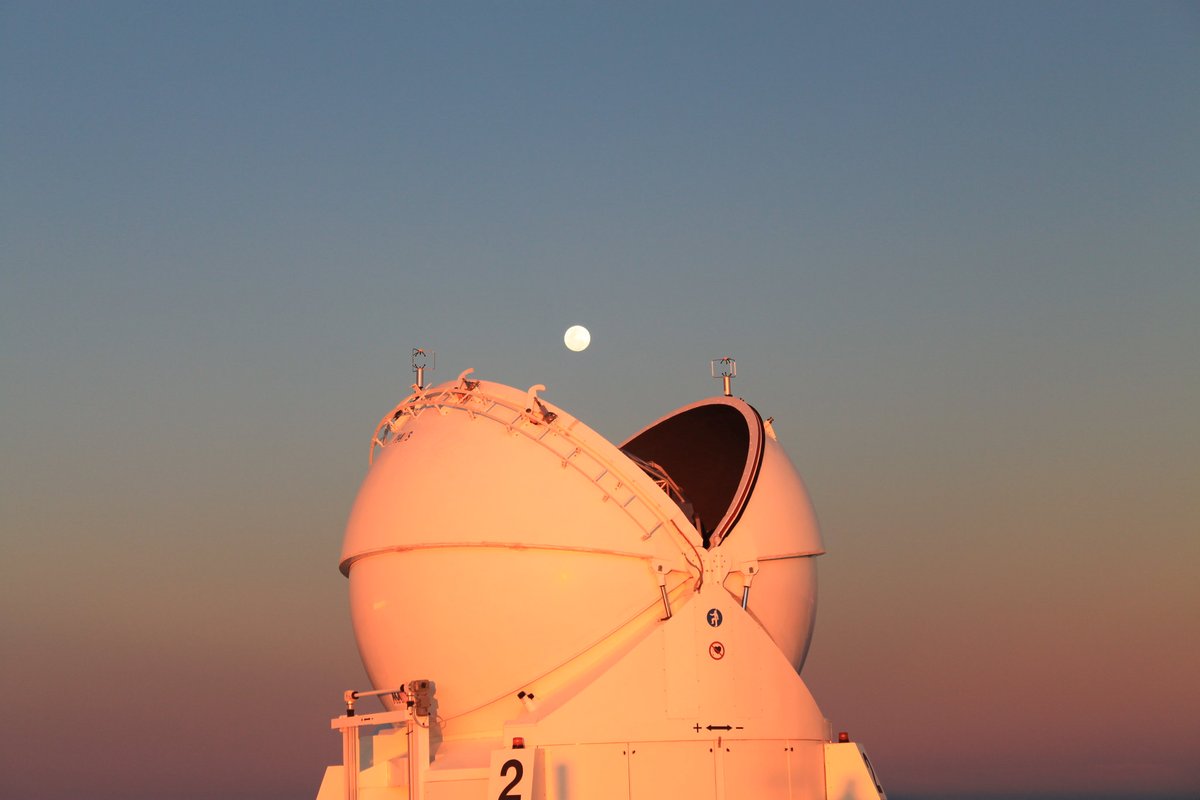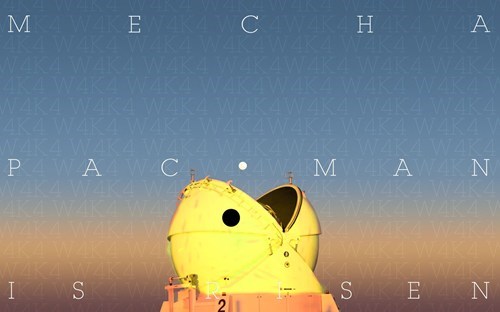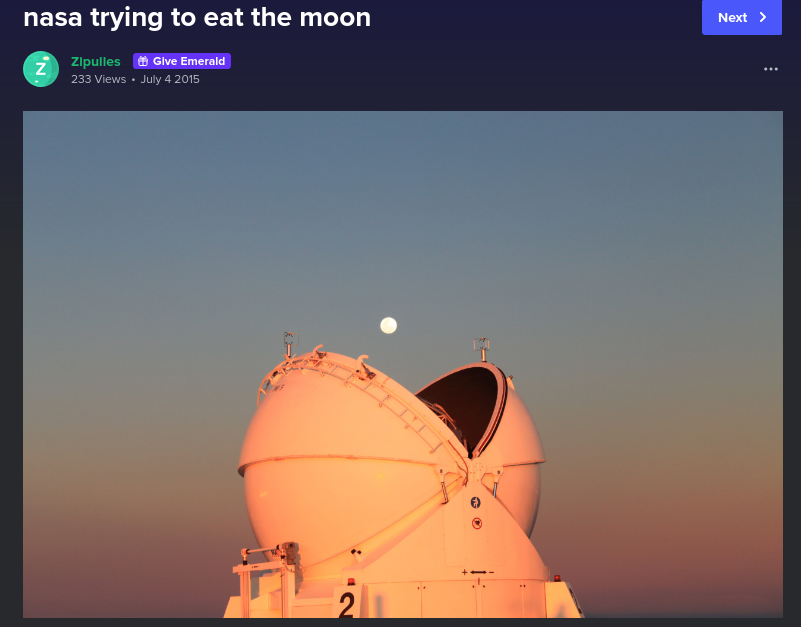I& #39;d like to tell the story of my cover photo that you may have seen circulating on the net: the Pacmoon telescope playing with the moon, or how to create a meme by accident! Thread https://abs.twimg.com/emoji/v2/... draggable="false" alt="👇" title="Rückhand Zeigefinger nach unten" aria-label="Emoji: Rückhand Zeigefinger nach unten">
https://abs.twimg.com/emoji/v2/... draggable="false" alt="👇" title="Rückhand Zeigefinger nach unten" aria-label="Emoji: Rückhand Zeigefinger nach unten">
This picture was taken at the @ESO Very Large Telescope one of the most scientifically productive telescope in the world. The Very Large Telescope is in fact several telescopes, with one aim: probing the Universe!
The larger a telescope is, the more light it gathers, and therefore it can observe faint stars (intrinsically faint or faint because they are very far from us). Also, the larger a telescope is, the more fine details it can observe: it has a high angular resolution!
A technique called interferometry allows us to combine the light from several telescopes and to obtain a resolution proportional to the distance between the telescopes. You can& #39;t see very faint objects, but you can see a lot of detail!
This makes it possible to study the surface of giant stars, disks where planets form, to analyse these planets, to understand the active nuclei of galaxies, to measure the size of stars etc.
This is technically very complicated, and involves knowing the distances between the telescopes very well and & #39;recombining& #39; their light with a precision of the order of a few micrometres, via & #39;little trains of light& #39;, these underground delay lines (see photo).
In addition to the 4 large 8m telescopes you saw before, there are 4 smaller telescopes (ATs) that can be moved for interferometric purposes. You can see them in front of the large telescopes in the next picture.
It is now that I start to teach you things... observations in astronomy often take place at night (yes, otherwise we see less stars!)
So when we observe we live a bit out of sync, we eat before sunset etc... and at the VLT there is a certain ritual, it is the observation of the sunset before the beginning of the observation night. And we hope to see it without clouds, not like on the picture!
We still hope to see the green ray, which is not a legend. The observatory of Paranal is an ideal place to observe this optical phenomenon. The following picture was taken by G. Hüdepohl, I highly recommend his pictures of the Atacama: http://atacamaphoto.com"> http://atacamaphoto.com
This sunset is usually a nice moment with the astronomers on site (like here with my colleague @cq_cla from @ESO ). When the sun is down, we go to work. The telescopes start to open, ready to observe our Universe!
But on the night of the Pacman photo, it was a full moon. And when does the moon rise when it is full? Almost at the same time as the sun sets, and where does it rise? Opposite the sun, I& #39;ll let you guess if it& #39;s in the north, south or elsewhere!
While watching the sunset this evening in August 2011, I had also taken pictures of the "little telescopes", thinking that I would like to immortalize the opening of these balls!
And I got that shot! This picture has been taken a lot since then, without me knowing it, and I see it reappearing every month on various sites. It is now all over the net, feel free to share fun links towards it!
I like this one:
I conclude with this picture... often when we talk about space, people think of NASA, which certainly does nice things, but in Europe we also know how to do great science. This observatory is an excellent example of scientific collaboration between European countries @ESO !

 Read on Twitter
Read on Twitter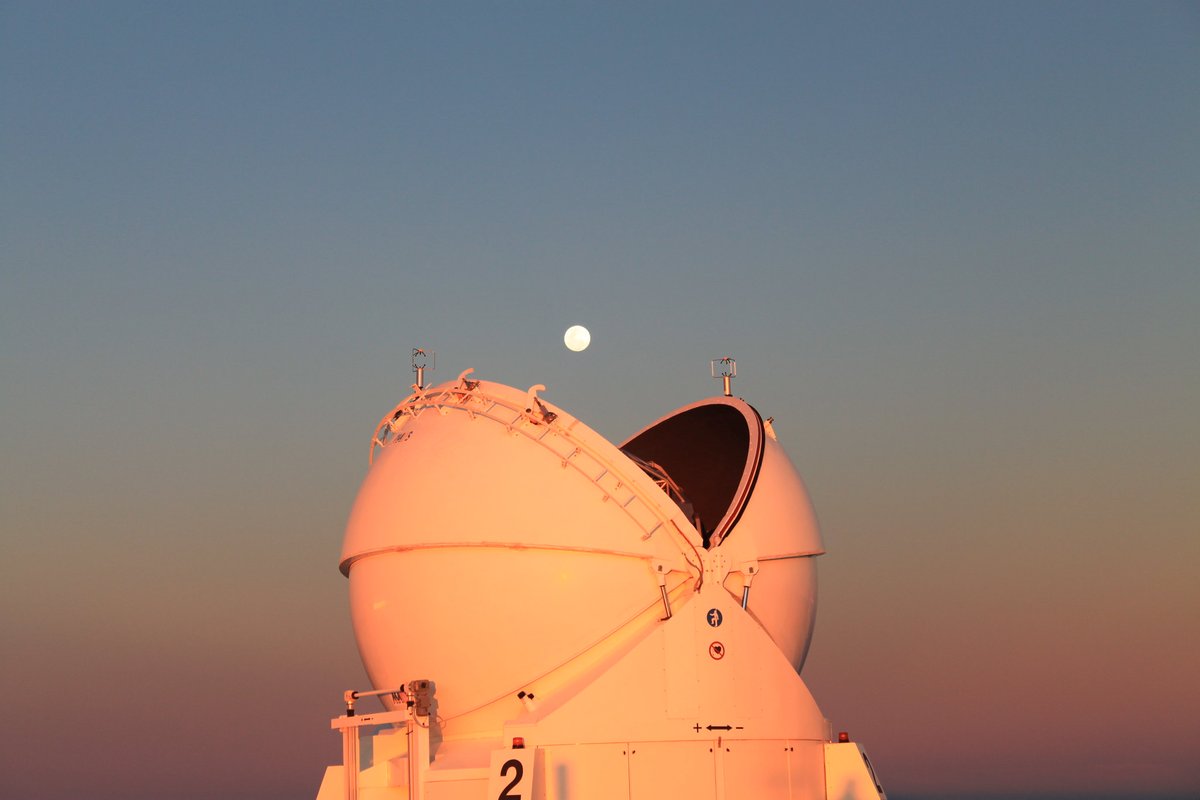 " title="I& #39;d like to tell the story of my cover photo that you may have seen circulating on the net: the Pacmoon telescope playing with the moon, or how to create a meme by accident! Threadhttps://abs.twimg.com/emoji/v2/... draggable="false" alt="👇" title="Rückhand Zeigefinger nach unten" aria-label="Emoji: Rückhand Zeigefinger nach unten">" class="img-responsive" style="max-width:100%;"/>
" title="I& #39;d like to tell the story of my cover photo that you may have seen circulating on the net: the Pacmoon telescope playing with the moon, or how to create a meme by accident! Threadhttps://abs.twimg.com/emoji/v2/... draggable="false" alt="👇" title="Rückhand Zeigefinger nach unten" aria-label="Emoji: Rückhand Zeigefinger nach unten">" class="img-responsive" style="max-width:100%;"/>

